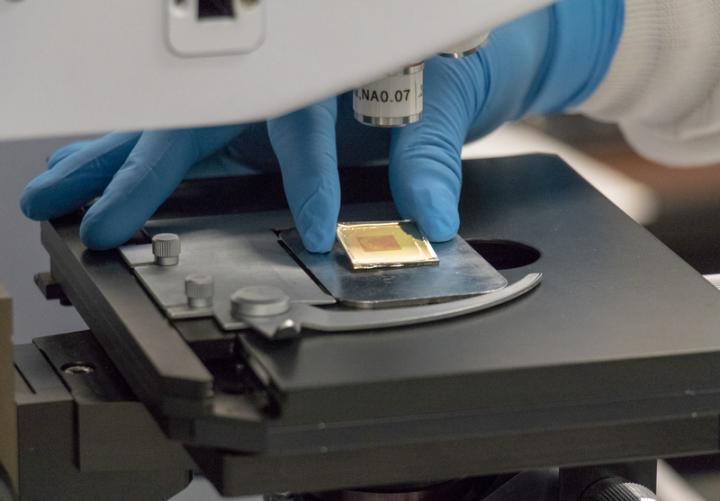What is real is not always as it appears. University of Central Florida researchers have found a way to hide information on materials and only make it visible to a person using the right tech.
“We found we can create a surface where we preferentially control absorption of light,” said Debashis Chanda, an associate professor in UCF’s NanoScience Technology Center who has developed the technique.
The findings were published in the Nature journal Light: Science & Applications.
The trick is to put the information on a surface that is riddled with nanoscale patterns, which can fool the naked eye by reflecting only a solid color rather than the intended information. To get the intended information, a person must look through an infrared lens or camera tuned to the correct infrared band.
And not only can information be hidden this way, the information can also be changed so that the secret messages invisible to the human eye can appear and reappear. These further developments were published recently as a cover article in the journal ACS Photonics.
The applications for this technology could include anti-counterfeiting security, infrared tagging or infrared camouflages where, for instance, the presence of a designer label could be confirmed with a look through an infrared camera. It also has military applications, such as confirming which assets are friendly and which are enemy by tags on their surfaces that are only visible in a specific infrared band or by dynamically changing the information for infrared camouflage.
In the Light: Science & Applications study, the researchers demonstrated that they can hide images within the infrared spectrum while the same area appears as a solid color in the visible spectrum. To do so, they created a three-level, layered, “plasmonic” system that sandwiches a polymer layer imprinted with nanoscale holes, between a gold mirror at the bottom and a gold layer at the top with holes that match the polymer layer.
Images can be imprinted on top of the “plasmonic sandwich,” and aspects of the holes, such as size and depth, help dictate which infrared band the image can be seen in. Without looking through an infrared camera tuned to the right band, the top of the device looks like a solid color, such as a yellow square, thanks to the unique properties that can be achieved with materials at the nanoscale.
Varying the pattern characteristics allows the researchers to control the electron plasma resonance, or the electric energy, created when light hits the device.
“So, by controlling this electron plasma resonance we can actually control which color of light or which band of light is absorbed and reflected,” Chanda said.
In the ACS Photonics study, the researchers went a step further and developed a way to erase and display the image in selected infrared bands.
They did this by adding a layer of phase change material vanadium dioxide within the “plasmonic sandwich” that dynamically changes the light reflection from the surface from 100 to 0 percent and back as the phase change is triggered.
“It provides an additional element of dynamic tunability where the coded information is concealed or revealed to infrared cameras,” Chanda said.
Source: University of Central Florida
Journal: Light: Science & Applications
Funder: National Science Foundation

